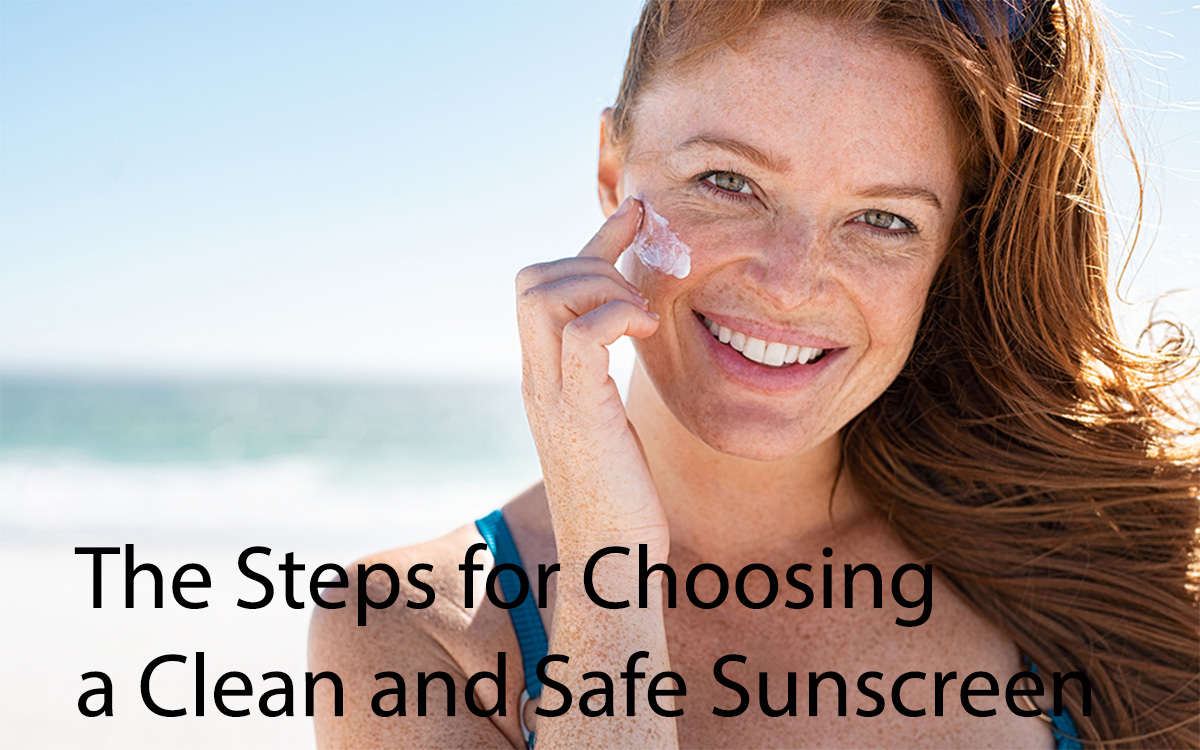The most despicable mistake you can make for your skin is not wearing a sunscreen. Not wearing sunscreen will not only result in premature aging, but will also cause wrinkles, brown spots, and skin cancer. This is why it is imperative to choose a clean and safe sunscreen. Read on to learn about the ingredients in sunscreen. This way, you can make the right decision for your skin.
Zinc oxide
Among the many ingredients found on your skin care products, zinc oxide is one of the best at blocking the sun’s damaging UVA and UVB rays. While titanium dioxide is more effective at blocking both short and long ultraviolet rays, zinc oxide has the advantage in protecting against both. Moreover, zinc oxide is FDA approved as a sunscreen agent. To make it more appealing to consumers, zinc oxide has no known side effects.
In addition to protecting your skin from the sun’s harmful rays, zinc oxide also has some other benefits. It reduces the tenderness you might experience after sun exposure. This ingredient is safe to use indoors and outdoors, and can be applied round the clock. In addition to its many skin benefits, zinc oxide is also safe to use year-round. It is available in many forms and is not only effective against the sun’s harmful rays, it is also a natural anti-inflammatory, so it is safe to use it under any situation.
Zinc oxide particles are smaller than 30 nanometers, so they do not enter the bloodstream and are safe to use on sensitive skin. However, chemical sunscreen ingredients can enter the bloodstream because they are molecular in size and are designed to be absorbed into the skin. The biggest concern with nanoparticles found in cosmetics is inhalation. Therefore, sunscreens containing zinc oxide should not be a concern for the general public.
Although zinc oxide is not a perfect ingredient, it is still the most effective and safest ingredient for sun protection. If you have sensitive skin or an acne problem, zinc oxide is the best ingredient for you. It may take a little research to find the right one for you, but it’s well worth it. You can get your hands on some zinc oxide sunscreens today. You’ll be glad you did.
This mineral has undergone extensive research to ensure that it is an effective, safe, and effective sunscreen. Nanoparticles are extremely small particles that are less than 100 nanometers in size. These tiny particles can be harmful to marine life. Even worse, they may cause oxidative stress when exposed to UV light, which can damage the cells of sensitive organisms. Hence, it’s important to use non-nano particles of zinc oxide as a sunscreen.
Titanium dioxide
Although titanium dioxide is used in sunscreen formulations for decades, recent research has questioned its safety and efficacy. Although it has long been used as a sunscreen agent, titanium dioxide is not safe when applied in pressed powder form, which is a common practice in sun-care products. Moreover, titanium dioxide is considered a possible carcinogen when inhaled, making its use in sprays and aerosols extremely questionable. Despite this, there is no conclusive evidence to prove that titanium dioxide is harmful when applied to skin, as long as it is applied correctly.
As a non-irritant, titanium dioxide is a safe sunscreen. It does not clog the skin, and has been used for centuries in various consumer and industrial products. This mineral pigment has a long list of uses, including cosmetics, water treatment agents, food colorants, sunscreen, and other cosmetics. Titanium dioxide also serves as an effective catalyst in solar panels. It is also used in cosmetics, including make-up, toothpaste, and paint.
Another type of titanium dioxide sunscreen is made of zinc oxide, a mineral derived from zinc. In concentrations as high as 25 percent, zinc oxide is highly effective at protecting the skin from UVA rays. Titanium dioxide, on the other hand, has smaller nanoparticles and does not clog pores. However, titanium dioxide is less effective against UVA rays, so a combination of zinc oxide and titanium dioxide is preferred for maximum protection.
Some other chemical ingredients in sunscreen are problematic. Oxybenzone, for example, has been linked to hormone disruption, and it can damage cells in the skin. Oxybenzone is a synthetic estrogen that is known to increase the risk of skin cancer. In addition, it is technically an organic compound, which does not necessarily mean that it is safe. Compared to oxybenzone, titanium dioxide is a clean and safe sunscreen.
There are many reasons to choose a non-toxic, mineral-based sunscreen. Using zinc oxide in sunscreen formulations is not only better for your skin than chemical ones, but it also reduces the risk of clogging your pores. Unlike chemical sunscreens, titanium dioxide does not cause irritation, and is even safer than a chemical sunscreen. There is no need to worry if your kids are using this product.
Octinoxate
The Environmental Working Group rates the effectiveness of sunscreens using scientific data and literature. In May 2018, Hawaii banned chemical sunscreen ingredients such as oxybenzone and octinoxate because scientists believe they cause coral bleaching. Reef-safe sunscreens are available and contain fewer chemicals. For example, Blue Lizard Sensitive SPF 30 is free of oxybenzone, which can damage coral tissue and disrupt the endocrine system. Titanium dioxide and zinc oxide provide UV protection.
The Environmental Working Group notes that nearly three-quarters of the top-selling sunscreens don’t do what they claim. Many contain harmful ingredients, including benzene, which is a human carcinogen. It also affects reproduction in animals and causes coral reef bleaching. A study in 2021 published in Nature called for sunscreen manufacturers to recall products containing benzene, which is a known carcinogen.
The most commonly used sunscreen chemicals are oxybenzone and octinoxate. They are linked to reproductive toxicity, organ system toxicity, and contact allergies. Beware of benzophenone, another popular ingredient in sunscreens. They are both dangerous to aquatic life. Other harmful ingredients include octinoxate, an ingredient found in sunscreens that can leach into water.
If you’re concerned about chemical ingredients, you can always opt for natural-based sunscreens. These ingredients can offer better protection than their chemical counterparts, such as oxybenzone and octinoxate. However, be cautious about chemical sunscreens if you have sensitive skin. The Environmental Working Group recommends chemical-free sunscreens for sensitive skin. So, how do you choose the right one?
First, you must choose a product that contains no ingredients you’re allergic to. Some non-clean sunscreens contain ingredients that may disrupt hormones, cause allergies, and be toxic to marine life and coral reefs. Some of the physical sunscreens contain nanoparticles to reduce chalkiness. The problem with nanoparticles is that they are absorbed by the skin, but scientists still don’t know if they can affect the long term.
Second, look for a broad-spectrum sunscreen that protects you from both UVB and UVA rays. All sunscreens block UVB rays, but UVA rays can penetrate deeper into your skin, increasing the risk of skin cancer and premature aging. Also, they can cause age spots and wrinkles. These are all things you want to avoid. So, buy a broad-spectrum sunscreen today!
Benzene
You may have wondered if benzene is an ingredient in sunscreen. But the problem lies in the contamination of sunscreen manufacturing, not the ingredient itself. Benzene is a colorless liquid with a sweet odor and is highly flammable. It is used in manufacturing plastics and rubber, and is naturally produced during wildfires. While the ingredient may not be harmful to humans in small amounts, it has been linked to cancer.
Valisure, a Connecticut-based sunscreen company, has asked the FDA to investigate the company’s manufacturing practices and to develop guidance documents on benzene analysis. They have also filed class-action lawsuits against several sunscreen brands, claiming that their products contain benzene. While the lawsuit is largely about sunscreens, it also involves after-sun products. Despite the recent concerns, the company remains confident in its claims.
According to a Valisure LLC study, benzene is an unintended by-product of sunscreen production. Despite the fact that benzene is a suspected carcinogen, it is not uncommon for people to encounter it on a daily basis. Benzene is also a common building block in other chemicals, including many drugs, including aspirin. Nonetheless, the company has recalled five aerosol sunscreens due to the problem.
Despite the concern over chronic benzene exposure, Johnson & Johnson has announced a voluntary recall of five types of sunscreens. The products involved are Beach Defense, Cool Dry Sport, Invisible Daily, and Ultra Sheer. The company also recalled a product from CVS Health. The FDA is currently investigating the cause of the benzene contamination, but the company insists that it is unlikely to cause negative health effects.
Benzene is a known human carcinogen and has been linked to various types of cancer. According to the National Institute of Occupational Safety and Health, it can cause cancer and should not be used in cosmetics or personal care products. The ICH has recommended a limit of 0.1ppm. Benzene is a dangerous chemical that should not be used in sunscreens. If you are suffering from a skin condition as a result of benzene exposure, contact a law firm and pursue compensation. The money will go a long way toward helping you pay for medical care.
People also read :
- The Fascinating Facts You Probably Never Knew About Your Skin
- The Ingredients That Can Help Fight Signs of Premature Skin Aging
- Dermatologists Share Their Top Tips for Soothing Dry and Itchy Skin

